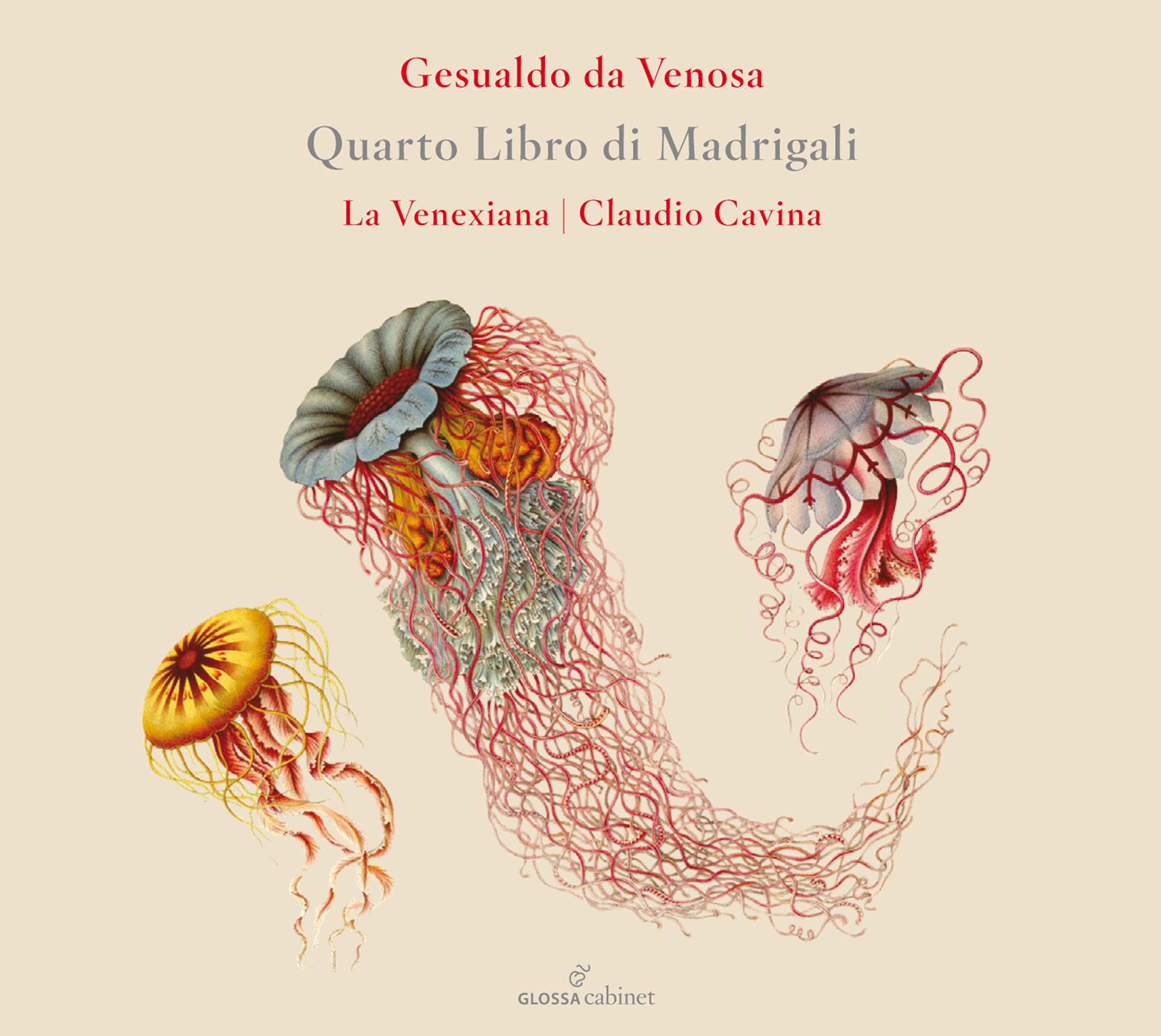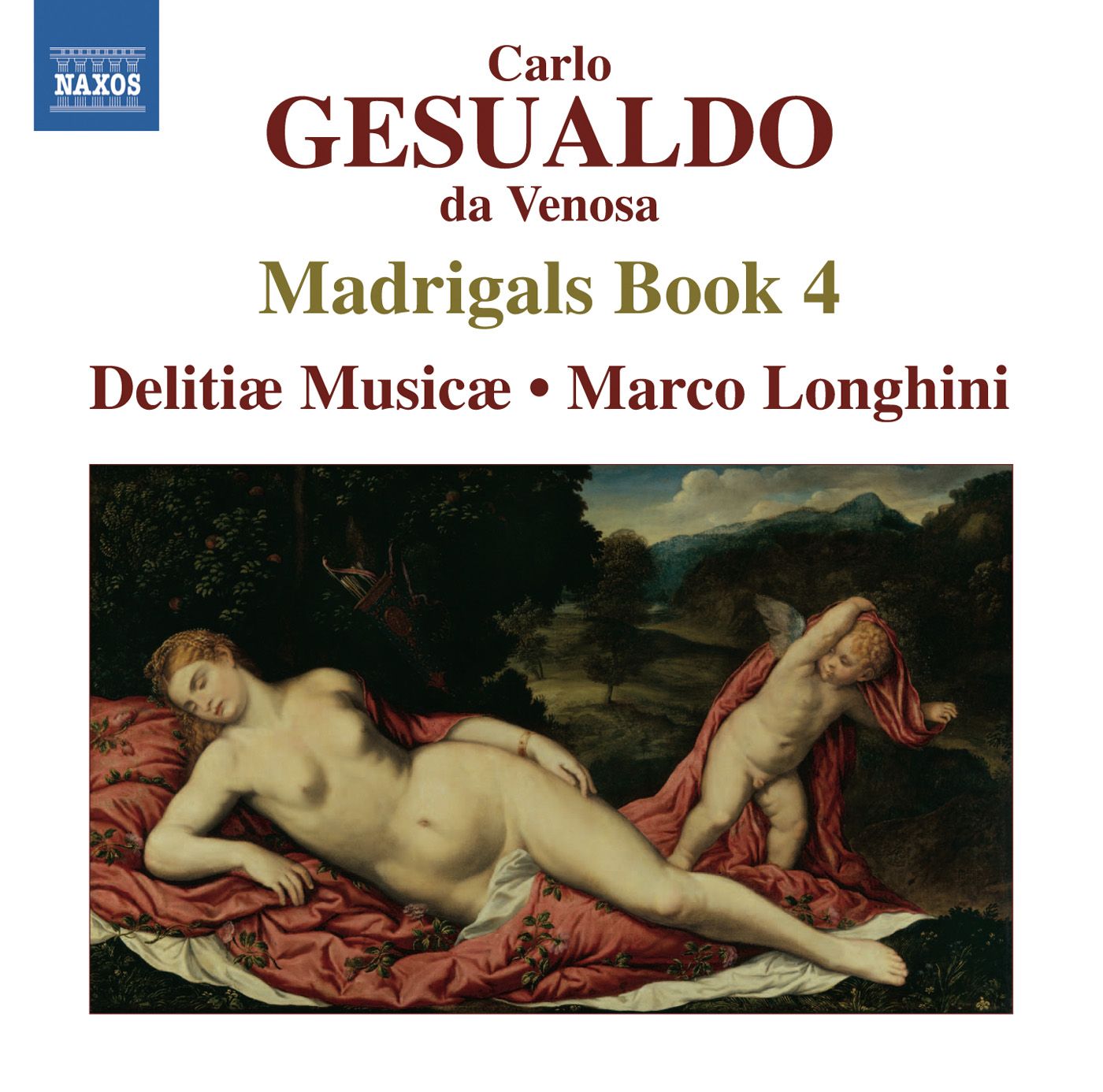Carlo Gesualdo: Quarto Libro di Madrigali

Probably most famous for being a murderer (and 'getting away with it' - he murdered his wife for infedelity, a crime de coeur), the music of Carlo Gesualdo (1566-1613) is notable for its harmonic adventurousness and daring..
In terms of the progression of his madigals, the fourth book (for five voices, 1596) reveals ever more chromaticism without extending to the experiments of Books 5 and 6. There is something transitional about this music, therefore, and that sense of adventure, of exploration, shines through each piece. One often hears harmonic “slippage” that is quite remarkably modern.
It has been suggested that it was Gesualdo who took the madrigal format through a crisis, on the one hand responding to each and every nuance of text, on the other experimenting with harmony with total abandon. As a general rule, spacious, chromatic segments, for example oin the sixth track of the Glossa, “Questa crudele e pia”), talk of deep emotions; elsewhere, he can use rapid motives in simple chordal settings. In the Fourth book, we hear the stretching of a muscal fabric, but the umprepared presentation of dissonance is found more in Gesualdo's final two books of madrigals.
You can hear the entire disc here:
The track listing is as follows:
1 | 0:00.00 Luci Serene E Chiare 2 | 3:53.55 Tal’hor Sano Desio 3 | 6:59.40 Io Tacerò 4 | 12:04.46 Che Fai Meco Mio Cor 5 | 14:35.20 Sento Che Nel Partire 6 | 18:29.14 Questa Crudele E Pia 7 | 21:56.02 Or Che In Gioia 8 | 25:26.43 Cor Mio, Deh, Non Piangete 9 | 29:54.46 Canzon Francese Del Principe 10 | 34:26.27 Sparge la Morte 11 | 39:28.57 Moro, E Mentre Sospiro 12 | 42:55.26 Mentre Gira Costei 13 | 45:36.45 A Voi, Mentre Il Mio Core 14 | 48:16.15 Ecco, Morirò Dunque 15 | 52:10.58 Se Taccio Il Duol S’avanza 16 | 54:29.26Arde Il Mio Cor 17 | 57:18.10 Se Chiudete Nel Core 18 | 59:35.21 Il Sol, Qual Or Più Splende 19 | 01:02:57 Mercè Grido Piangendo
Please note there are some 'borrowed' madrigals added: “Sento Che Nel Partire” is from the second book of 1594, as is “Se Taccio Il Duol S’avanza,” while the final offering, “Mercè Grido Piangendo,” is from the fifth book of 1611.
The label Glossa is part of the Naxos stable, and interestingly this disc comes into competition with one of its own: Delitiæ Mucicæ under Marco Longhini.

There is a lot to enjoy about Naxos' own recording of this. The actual recording quality is expansive and resonant (substantiallymore so than on Glossa. This might be a deciding point, for the dissonances that are so vital to Gesualdo's vocabulary speak so much more powerfully when not blunted acoustically. Here's the first madrigal, “Luci serene e chiare”:
That said, Delitiæ Musicæ seem to relish Gesualdo's use of shifting vocal texture in a very individual way, which has its own appeal. I am not absolutely sure whether the harpsichord contribution to “Tal'hor sane desio” works well, either:
One of their finest performances is “Cor mio, non piangete,” which drips with emotion:
Ultimately, I come out firmly in La Venexiana's corner. The Naxos performances have plenty oof imagination, but the finer recording and La Venexiana’s absolutely rigorous approach to Gesualdo’s music, which means we ge to relish each and ervy dissonance and innovation fully, gets my vote ...
Please note that the Venexiana performances remain available in a variety of issues, of which this one is the cheapest (as you can see, Spitify uses an earlier one for its cover). Talking of which, the Naxos is a snip at £4.67, so one could always have both.
